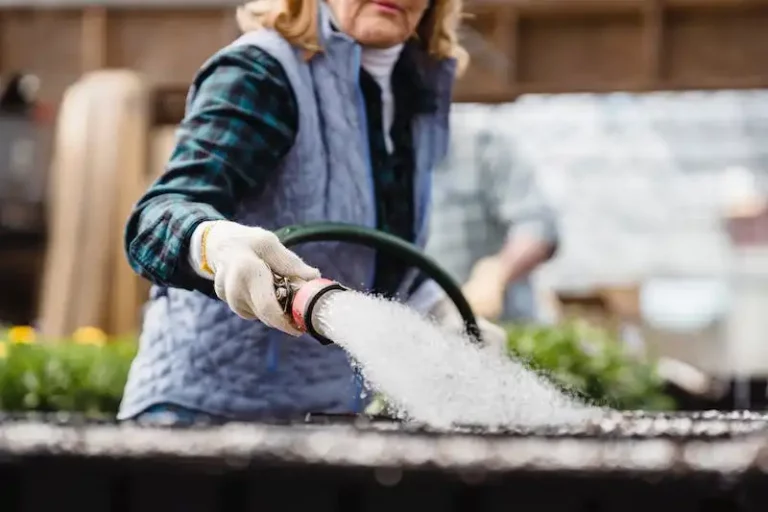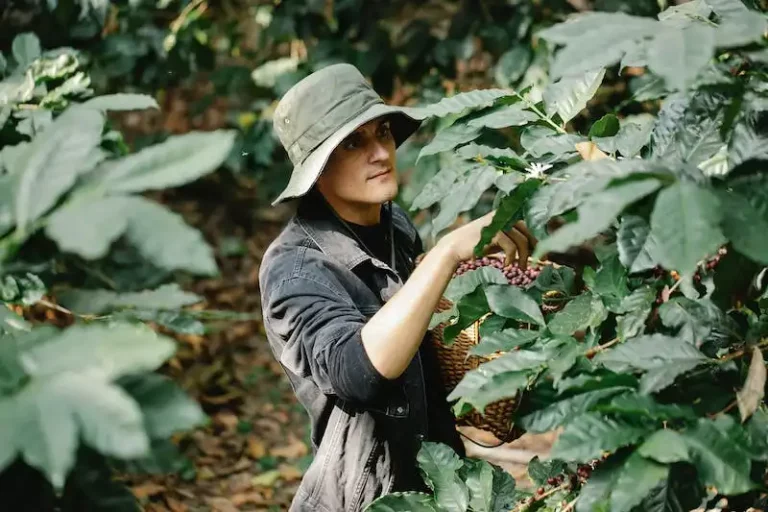Are you a fan of spicy food? If the answer is yes, then growing your own Ghost Peppers might be the perfect project for you. Ghost Peppers, also known as Bhut Jolokia, are one of the hottest peppers in the world, measuring over 1 million Scoville Heat Units. These fiery peppers pack a powerful punch and can add an intense heat to any dish. In this article, we’ll show you how to grow your own Ghost Peppers so you can enjoy their fiery flavor at home.
The first step in growing Ghost Peppers is choosing the right site. These peppers thrive in warm climates, so make sure to pick a sunny spot in your garden or balcony. Ghost Peppers can also be grown indoors, as long as they have access to plenty of light. If you’re planting from seed, start the seeds indoors about 8-10 weeks before the last frost date. Ghost Peppers take a while to germinate, so be patient.
Once your Ghost Pepper plants have sprouted and are a few inches tall, it’s time to transplant them to their final location. Choose a container or garden bed with good drainage, as these plants don’t like wet feet. If you’re planting outdoors, make sure the soil is well-drained and has been enriched with organic matter. If you’re planting in pots, use a well-draining potting mix.
Growing Ghost Peppers requires regular care and attention. These plants need lots of water, especially during hot summer months. Be sure to water them deeply, but be careful not to overwater, as this can lead to root rot. Fertilize the plants every two weeks with a balanced liquid fertilizer to promote healthy growth.
One thing to keep in mind is that Ghost Pepper plants can be susceptible to diseases. To prevent the spread of diseases, make sure to wear gloves and avoid touching your face while handling the plants. Pruning and supporting the plants can also help prevent disease and ensure the best possible harvest.
When it comes to harvesting Ghost Peppers, it’s best to wait until the peppers have fully ripened. Ghost Peppers start off green and turn a fiery red as they ripen. The ripening process can take several months, so be patient. Once the peppers have ripened, simply cut them off the plant using a pair of scissors or pruners.
Ghost Peppers can be used in a variety of recipes to add a spicy kick. These peppers are great for making hot sauces, salsas, and marinades. Just be sure to wear gloves and handle them with care, as their heat can linger on your skin and cause irritation. If you’re not a fan of extreme heat, you can also use Ghost Peppers in smaller quantities to add a hint of spice to your dishes.
Whether you’re a seasoned pepper grower or a beginner, growing Ghost Peppers can be a rewarding and exciting experience. These peppers are not for the faint of heart, but for those who seek the thrill of intense heat. So why not give it a try and grow your own Ghost Peppers at home? You’ll be able to enjoy their fiery flavor and impress your friends with your homemade spicy creations.
Ghost Pepper Seeds – Bhut Jolokia Pepper Seeds
If you are a fan of spicy food and want to test your taste buds with the hottest pepper on the planet, then the Ghost Pepper, also known as Bhut Jolokia, is a must-have in your garden. This pepper variety is so hot that it can literally set your mouth on fire, so you need to be careful when handling it.
Before you start growing the Ghost Pepper, there are a few things you should know. Firstly, it is necessary to buy the right type of seeds. Ghost Pepper seeds, commonly known as Bhut Jolokia Pepper seeds, are available from various online and local seed suppliers. Make sure to buy the seeds from a reputable source to ensure their quality and viability.
Ghost Peppers thrive in warm temperatures, so starting them indoors is recommended. You can start the seeds in small pots using a well-drained potting soil mix. Keep the soil moist, but not overly wet, and the newly planted seeds should germinate within a week or two.
Once the seedlings have grown a couple of inches tall, they can be transferred to larger containers or directly into the ground. Ghost Peppers require spacing of at least 18 inches between plants to allow for their growth and proper airflow.
Ghost Pepper plants need a lot of sunlight, so make sure to place them in a location that receives at least 6-8 hours of direct sunlight per day. If you live in a region with cooler temperatures, you may need to provide additional heat using grow lights or a greenhouse.
When it comes to soil, Ghost Peppers prefer a loamy, well-drained soil with a pH level between 6.0 and 6.5. Adding organic matter such as compost or aged manure can help improve the soil’s fertility and moisture retention.
Growing Ghost Peppers is not as easy as growing other pepper varieties, so it is important to provide them with the necessary care and expertise. Be sure to water your plants regularly, especially during hot and dry periods. However, be careful not to overwater them, as this can lead to diseases and root rot.
Ghost Peppers usually produce wrinkly and red peppers that can be harvested when fully matured. Be patient, as it can take up to five months for the peppers to ripen. Harvesting the peppers at their peak will give you the best flavor and heat. Remember to wear gloves when handling the peppers or their seeds, as the capsaicin, the active ingredient that makes Ghost Peppers spicy, can cause skin irritation and burns.
Ghost Pepper seeds and their derivatives, like Ghost Pepper powder, are commonly used in Indian cuisine for their intense heat and flavor. The heat is not only appreciated for its spiciness but also for its health benefits. Ghost Peppers are believed to have anti-inflammatory properties and are used to relieve headaches and promote heart health.
In conclusion, growing Ghost Pepper plants requires some knowledge and experience, but with the right care, they can thrive and produce the hottest peppers in the world. Just be sure to follow the necessary steps in propagating and maintaining the plants, and you will soon have a bountiful harvest of Ghost Peppers to enjoy in your favorite recipes.
Grow it yourself Ghost Pepper
Ghost Pepper, also known as Bhut Jolokia, is a very hot type of pepper that is being grown by many gardeners around the world. If you are a fan of spicy food and want to try growing it yourself, this article is for you.
First of all, you need to buy the seeds of Ghost Pepper. They are easily available online or in stores. Choose a reputable seller to ensure the quality of the seeds. Soon, you’ll have your own supply of Ghost Peppers.
Once you have the seeds, it’s time to get them started. Plant the seeds in pots or other containers using a potting mix. Make sure to sow the seeds at a depth of about a quarter of an inch. Keep the soil moist and maintain a warm temperature, preferably around 75 to 85 degrees Fahrenheit.
Be very careful with watering. Ghost Peppers like to be watered regularly, but they don’t tolerate heavy, waterlogged soils. They prefer a well-drained soil. Also, be careful not to overwater the seedlings, as it can cause diseases and irreparably damage the plants.
As the seedlings grow, they will need support. Ghost Peppers are tall and can reach up to 4 feet in height. Use stakes or cages to support the plants and prevent them from falling over.
Ghost Peppers are perennial plants, which means they can survive more than one season. They are generally grown as annuals, though, especially in colder regions. If you live in a warm climate, you can grow Ghost Peppers year-round.
When it comes to care, Ghost Peppers are not very demanding. They need plenty of sunlight, at least 6 hours a day. They also prefer warm temperatures and high humidity. Fertilizer can be applied every few weeks to give the plants a healthy boost.
Ghost Peppers are known for their high vitamin content and anti-inflammatory properties. They are often used as a natural remedy for various health conditions. Just be careful when handling the peppers, as they can cause irritation to the skin and eyes.
It takes about a decade for Ghost Peppers to fully mature and start producing pods. The pods are very hot and wrinkly, measuring around 1 to 2 inches in length. They are not for the faint of heart and should be consumed in small quantities.
Harvest Ghost Peppers when they are fully mature and red in color. Most people prefer to use gloves when handling the peppers to avoid any discomfort. Store the harvested peppers in a cool, dry spot to keep them fresh for a longer period of time.
Growing Ghost Peppers can be a fun and rewarding experience for gardeners who enjoy spicy food. Just follow the care instructions and soon you’ll have your own supply of these fiery peppers to enjoy!
Like dying
Growing Ghost Peppers can be a rewarding but challenging experience. The peppers are known for their extreme heat, often referred to as “like dying” due to the intense spice they produce. However, with the right care and attention, you can successfully grow these fiery peppers in your own home.
Headaches, with stems about a foot tall, and proper moisture are important factors to consider when choosing a variety of Ghost Pepper seeds to plant. You’ll need to propagate the seeds using a crystalyn agent to increase the likelihood of successful germination.
Starting with young seedlings is the best way to ensure healthy growth. Proper pruning and pruning techniques are also necessary to allow the plants to thrive. Five therapy sessions a week, with temperatures between 70-80°F, is the ideal condition for Ghost Pepper growth. Using a well-drained soil with a high-quality fertilizer is crucial for the plants’ development.
Transplanting the seedlings when they reach about five inches in height is recommended. Ghost Peppers are known to be finicky during this process, so choose a warm and sunny spot with enough space for the plants to spread out. It’s important to wear gloves and protect your hands while handling the peppers, as they can cause skin irritation.
The flowers of the Ghost Pepper appear for a short period, usually during the hottest part of the day. It’s important to give them extra care and attention during this time. Harvesting the peppers should be done carefully, either by gently pulling them off the stems or using a sharp knife to cut them. Be sure to harvest the peppers at the right time when they have fully ripened and reached their maximum heat level.
Alternatively, if you’re not up to the challenge of growing your own Ghost Peppers, you can always buy them from a reliable site or local store. There are also various recipes and uses for Ghost Peppers, such as adding them to sauces, marinades, or even creating a spicy drink by infusing the peppers in a liquid. The peppers are known to have anti-inflammatory properties and can provide a unique flavor to any dish.
In conclusion, growing Ghost Peppers can be a daunting task, but with the right expertise and care, you can enjoy the satisfaction of nurturing these fiery chili plants. Whether you decide to grow them yourself or buy them, the intense heat and vibrant color of Ghost Peppers will surely add excitement to your culinary adventures.



